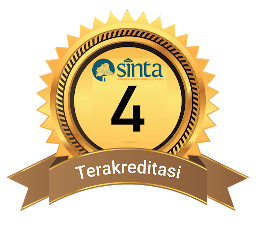Analisis Kesulitan Belajar Asam Basa pada Siswa Kelas XII SMAN 1 Masbagik
DOI:
10.29303/cep.v7i2.7544Published:
2024-12-04Issue:
Vol. 7 No. 2 (2024): Edisi NovemberKeywords:
Learning difficulties, acid-baseArticles
Downloads
How to Cite
Abstract
This study aims to determine the form of learning difficulties and describe the factors that cause learning difficulties of grade XII students of SMAN 1 Masbagik on acid-base material. The research method used was qualitative descriptive with a population of 102 students from classes XII F3, XII F4, and XII F5. The research sample was taken using a saturated sampling method, and data was collected through test questions and questionnaires. The results showed that; 1) The level of difficulty of learning acid-base students in mastery of concepts by 58% in the category is quite difficult, linking relationships between concepts by 67% in the difficult category and applying formulas for solving problems by 80% in the difficult category. 2) The level of learning difficulty of students due to internal factors is mostly (47%) in the very low category. The level of student learning difficulty is due to the aspect of interest with the highest percentage of 70% in the low category, because the motivation aspect with the highest percentage of 53% in the category is quite high, and because the health aspect with the highest percentage of 56% in the category is very low. 3) The level of learning difficulty of students due to external factors is mostly (70%) in the low category. The level of learning difficulty of students is due to the school aspect with the highest percentage of 51% in the low category, because of the material aspect with the highest percentage of 56% in the low category, because of the family aspect with the highest percentage of 48% in the low category, and because of the community aspect with the highest percentage of 43% in the very high category.
References
Ristiyani, E., & Bahriah, E. S. (2016). Analisis Kesulitan Belajar Kimia Siswa di SMAN X Kota Tangerang Selatan. Jurnal Penelitian dan Pembelajaran IPA, 2(1), 18-29.
Marfu’a, S & Resti, T A. (2022). Analisis Kesulitan Belajar Siswa dalam Memahami Materi Kesetimbangan Kimia (297-307). Palembang: UIN Raden Fatah.
Priliyanti, A., Muderawan, I. W., & Maryam, S. (2021). Analisis Kesulitan Belajar Siswa dalam Mempelajari Kimia Kelas XII. Jurnal Pendidikan Kimia Undiksha, 5(1), 11-18.
Arifin, Z. (2009). Evaluasi Pembelajaran. Bandung: Remaja Rosdakarya.
Marzuki, H., & Astuti, R. T. (2017). Analisis Kesulitan Pemahaman Konsep pada Materi Titrasi Asam Basa Siswa SMA. Jurnal Pendidikan Kimia, 1(1), 22-27.
Muderawan, I. W., Wiratama, I. G., & Nabila, M. Z. (2019). Analisis Faktor-Faktor Penyebab Kesulitan Belajar Siswa Pada Materi Kelarutan Dan Hasil Kali Kelarutan. Jurnal Pendidikan Kimia Indonesia, 3(1), 17-23.
Yakina, Kurniati, T., & Fadhilah, R. (2017). Analisis Kesulitan Belajar Siswa pada Mata Pelajaran Kimia Kelas X di SMA Negeri 1 Sungai Ambawang. Ar-Razi Jurnal Ilmiah, 5(2), 287-297.
Sudiana, I. K., Suja, I. W., & Mulyani, I. (2019). Analisis Kesulitan Belajar Kimia Siswa pada Materi Kelarutan dan Hasil Kali Kelarutan. Jurnal Pendidikan Kimia Indonesia, 3(1), 7-16.
Prayunisa, F. (2022). Analisa Kesulitan Siswa Kelas XI dalam Pembelajaran Kimia di SMAN 1 Masbagik. Journal of Classroom Action Research, 4(3), 147-150.
Yusuf, A, M. (2013). Metode Penelitian Kualitatif, Kuantitatif dan Penelitian Gabungan. Jakarta: Rineka Cipta.
Sugiyono. (2018). Penelitian Pendidikan Metode Penelitian Kuantitatif, Kualitatif, dan R&D. Bandung: Alfabeta.
Hakim, T. (2000). Belajar Secara Efektif. Jakarta: Puspa Swara.
Rumansyah & Irhasyuarna, Y. (2002). Penerapan Metode Latihan Berstruktur dalam Meningkatkan Pemahaman Siswa Terhadap Konsep Persamaan Kimia. Jurnal Pendidikan dan Kebudayaan, 8(35), 172.
Wenno, I. H., Ezomar, K., & Penti, S. (2016). Analisis Kesulitan Belajar dan Pencapaian Hasil Belajar Siswa melalui Strategi Pembelajaran Inkuiri. Cakrawala Pendidikan, 35(3), 378-385.
Hamalik, O. (2009). Proses Belajar Mengajar. Jakarta: Bumi Aksara.
Wati, A. K., & Muhsin. (2019). Pengaruh Minat Belajar, Motivasi Belajar, Lingkungan Keluarga, dan Lingkungan Sekolah Terhadap Kesulitan Belajar. Economic Education Analysis Journal, 8(2), 797-813.
Ratnawati, S. (2017). Faktor Penyebab Kesulitan Belajar. Pedagogi Jurnal Penelitian Pendidikan, 4(2), 25-29.
Author Biographies
Reza Farizal, Universitas Mataram
Mukhtar Haris, Program Studi Pendidikan Kimia, Universitas Mataram
Saprizal Hadisaputra, Program Studi Pendidikan Kimia, Universitas Mataram
License
Copyright (c) 2024 Reza Farizal

This work is licensed under a Creative Commons Attribution-ShareAlike 4.0 International License.
Authors who publish with Chemistry Education Practice agree to the following terms:
- Authors retain copyright and grant the journal right of first publication with the work simultaneously licensed under a Creative Commons Attribution License 4.0 International License (CC-BY-SA License). This license allows authors to use all articles, data sets, graphics, and appendices in data mining applications, search engines, web sites, blogs, and other platforms by providing an appropriate reference. The journal allows the author(s) to hold the copyright without restrictions and will retain publishing rights without restrictions.
- Authors are able to enter into separate, additional contractual arrangements for the non-exclusive distribution of the journal's published version of the work (e.g., post it to an institutional repository or publish it in a book), with an acknowledgement of its initial publication in Chemistry Education Practice.
- Authors are permitted and encouraged to post their work online (e.g., in institutional repositories or on their website) prior to and during the submission process, as it can lead to productive exchanges, as well as earlier and greater citation of published work (See The Effect of Open Access).






